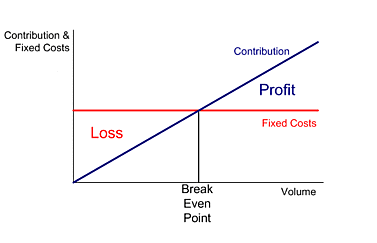A business is considered to be sound if it includes consistency in earning profit while considering the various risks as well. A firm is faced with a number of uncertainties. These uncertainties are in terms of nature of consumer needs, the diverse nature of competition, the uncontrollable nature of most elements of cost and the continuous technological developments. The uncertainty about the pattern and extent of consumer demand for a particular product increases the degree of risk faced by the firm. The nature of competition is related to either product, price or to both simultaneously. Product competition is more important till the product reaches the stage of maturity. Price competition begins from the product is established and reaches the maturity stage. During the growth stage, the risk of obsolescence of a product and shortening of the product life cycle is more. The degree of risk involved in product competition is greater than in price competition. When the prices rise continuously, no firm can be certain of its internal cost structure. This is because it does not have any control over the prices of raw materials or the wages to be paid to the individuals. In course of time, continuous technological improvements may make production completely obsolete. If an improved process is available, a firm can restrict its risk by neglecting its fixed investment. If it does not have an access to the improved processes, it may have to go out of business. Unless a firm is prepared to face the uncertainties, as a result of risk element, its profits will be changed. To plan for profits, a thorough understanding of the relationship of cost, price and volume is extremely helpful to business individuals.
The most important method of determining the cost-volume -profit relationship is Break-Even Analysis, also known as Cost Volume Profit (CVP) analysis. Break-even analysis involves the study of revenues and costs of a firm in relation to its volume of sales. It also includes the determination of that volume at which the firm’s costs and revenues will be equal.
The Break-Even Point (BEP) may be defined as that level of sales at which total revenue is equal to the total costs and the net income is zero. This is known as no-profit no-loss point. The main objective of the break-even analysis is not simply to find out the BEP, but to develop an understanding between the relationships of cost, price and volume.
Determination of the Break-Even Point
It may be determined either in terms of physical units or in money terms. This method is convenient for a firm producing single products only. The break-even volume is the number of units of the product, which must be sold to earn revenue. This revenue should be enough to cover all expenses, both fixed and variable. The selling price of all units covers not only its variable cost but also leaves a margin called contribution margin to contribute towards the fixed costs. The break-even point is reached when sufficient number of units has been sold so that the total contribution margin of the units sold is equal to the fixed costs. The formula for calculating the break-even point is:
Break-Even Point = Fixed Costs / Contribution Margin per Unit
Where the contribution margin = Selling price – Variable costs per unit.
Multi-product firms are not in a position to measure the break-even point in terms of any common unit of product. It is convenient for them to determine their break-even point in terms of total dollar sales. The break-even point is the point where the contribution margin is equal to the fixed costs. The contribution margin is expressed as a ratio to sales.
Break-even Point as a Percentage of Full Capacity: Full capacity can be defined as the maximum possible volume attainable with the firm’s existing fixed equipment, operating policies and practices. Break-even point is usually expressed as a percentage of full capacity. Considering the example, the full capacity of the firm is 1,00,000 units; the break-even point at 50,000 units can be expressed as 50 per cent of full capacity.
